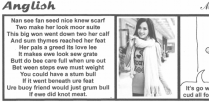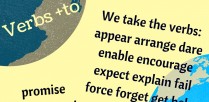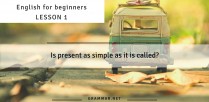Today is the great day. We are going to study Present Continuous tense.
In order to make Present Continuous construction we do the following:
- Recall to mind Present Simple form of the verb to be:
(I am/We, You, They are/She, He is), - Add the infinitive form of the main verb plus –ing.
- Study the result: I am +do +ing = I am doing
You are doing
We are doing
They are doing
She is doing
He is doing
This is easy, isn’t it?
1) There are some moments in our lives that we want to describe as soon as possible, right now:
- Mom, I am studying, please, don’t enter my room.
- What are you doing here? What does all this mess mean?!
- I am sorry, but I have a lot of homework from our English teacher, so I am learning new words now, I will clean up my room after.
- He is playing the guitar.
- We are eating; we are not watching TV.
- Are you smoking there? Close the door behind you, please.
- What are they looking at? They are watching the stars in the sky.
- I am not kidding. Look. He is dancing!
2) That is the case to use Present Continuous: we talk about some actions that are performed now and not on a daily basis.
Please, note: if we speak about things in general or repeated on the schedule, we use Present Simple tense (It rarely rains in this region. She eats eggs every day. Puppies always wag the tail.)
- Every day I go to the gym.
- You are a teacher, but you are not teaching us now.
- We play football in that yard.
- He studies till late in the evening.
3) We use Present Continuous to say about our future intentions.
- I am playing the violin this evening. Ring now I am reading a book.
- They are shopping tomorrow. Now they are studying mathematics at home.
- We are flying to Paris next week. This week we don’t have enough money yet.
- What are you doing tonight?
- Isn’t she writing the last chapter of her new book tomorrow?
- Is he going out tomorrow? Tomorrow he and his wife are going to a concert of their friend.
4) We have got one more variant to say something in Future using the Present Continuous form: to be going to do something.
This construction is as simple as “I am +go +ing” + the main verb in the infinitive form.
- I am going to see my friends tonight.
- You are not going to spoil your soup and put there some suspicious-looking ingredients.
- We are going to have a cup of coffee.
- Are they going to spend the whole life in front of the TV set?
- She is not going to live in England, but she is going to speak English because she needs it for work.
- Is he going to study mathematics or biology?
Let’s sum up!
- We make Present Continuous tense using the verb to be in Present Simple, we add the main verb + ing.
- To form the negatives we add “not/n’t” to the verb to be: I am not going there alone! He isn’t working now; it is his weekend today.
- To ask questions, we replace the verb to be in front of the pronoun: Are they looking at us?
Please, note: there is a list of verbs with irregular endings.
- If the verb ends with the “e” vowel, we take it off and add “ing”: dance +ing= dancing.
- If the verb is monosyllabic (in most cases) and ends with one vowel before consonant we double that ending consonant: Shop +ing = Shopping.
5) Hush! There is one more secret here.
When we use Present Continuous tense to speak about our future intentions, these are surer than those in Future Simple tense. So, if I say “I am going to have a cup of tea.”, I mean that it is in my nearest plans for future (99% probability). But if I say “I will have a cup of tea.”, I may not drink tea at all (55% probability).






